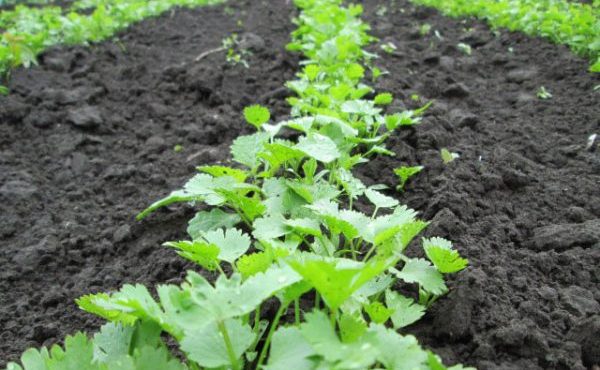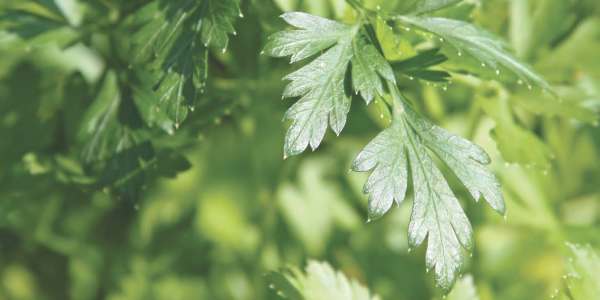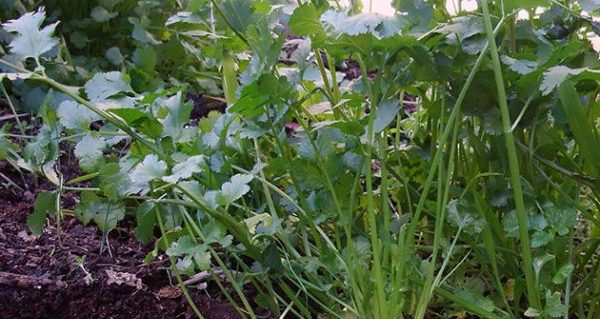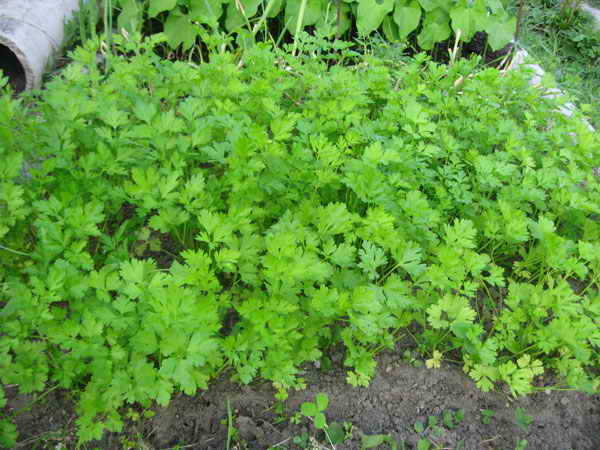Rules for planting parsley in the open ground in spring
Content
Landing dates
In the spring, they start sowing seeds of parsley and dill. The best time to start planting is April, when severe frosts pass and the earth begins to warm up. Some people prefer to sow it all April, October-November, June-July. The time of sowing with seeds depends only on the goals and the desired result, for example, in the summer it is sown for good greenery for the next year.
If you want to get it in early spring, then you need to plant it before winter, but here you need to guess with the weather conditions and prevent the seeds from freezing in the ground. Ideal when all severe frosts have passed. Parsley, like dill, is not afraid of frosts down to -5 degrees. The most correct of all options when planted in spring from seed.
How to plant
A bed for parsley and dill is prepared in the autumn, but it is necessary to plant the prepared seeds in it in the spring. The leafy spice can be planted with seeds in the summer in July. Correct soil preparation in autumn for greens (dill, parsley) is as follows:
- a garden bed is being dug;
- fertilizers (organic) 6-7 kg per 1 sq. m .;
- add mineral fertilizers like superphosphate and potassium salt 20-30g per 1 sq. m .;
- in the spring, you should repeat the addition of mineral fertilizers superphosphate and potassium salt with the addition of urea 50g per 1 sq. m .;
- when the frosts have already passed, sowing seeds should be started in early April;
- the distance between the bushes should not exceed 6 cm; with dense germination, the bed must be thinned out;
- for greater productivity, parsley should be planted in the place where cucumbers, potatoes, beets, cabbage were grown last year.
Root crops are planted in open ground or greenhouses. In this case, preparation should be started a month before planting, in February.
How to plant by seeds
There are many methods for preparing parsley or dill seeds for sowing. Seed soaking is carried out 3-4 days before planting in the ground. You should wet gauze or cotton cloth, pour seeds into it, spill them with a weak solution of potassium permanganate and leave for a couple of days to germinate. With the appearance of sprouts, the seeds are removed to the refrigerator for hardening. Without hardening, parsley, like dill, can sprout up to two weeks. After sowing seeds in the ground, special care and frequent watering are needed so that the seeds do not disappear in the ground, but it is not required to fill the garden bed, otherwise the seeds will rot.
For rapid germination, a forced method is used. Quicklime is introduced into the grooves for future plants, sprinkling with it quite a bit, and in the meantime the seeds are soaked in milk for 2-5 hours. After soaking the seeds, they need to be sown into the grooves and watered with water, the groove is covered with earth. The first shoots will appear in a day. This method can also be applied to dill for early greens.
There is also a widely used method when the cultivation of parsley in the open field is done by dry sowing in the ground. In this way, the seeds simply need to be sown in the garden without additional actions with them. This type of planting does not require much effort, but they will germinate later than soaked seeds.
Care and cultivation
In the greenhouse, parsley is grown by forcing green leaves and root crops. Root crops should be kept in wet sand at a low temperature before planting. Several grooves are prepared in the garden bed and planted in such a way that the upper part of the root remains above the ground. The approximate distance between the rows of such plantings is 15 cm, and between the parsley bushes 7 cm.
It can also be grown at home if there is no suburban area. To do this, we prepare a drainage box, with earth treated with warm water and tamped down. The prepared seeds are planted in a box half a centimeter deep. Watering such a home garden is done from a spray bottle and the soil is constantly monitored, which should not dry out.
Recommendations for caring for home-grown parsley are slightly different from caring for parsley in the garden beds:
- the soil should be kept slightly moist, but not wet or dry;
- be sure to monitor the temperature regime, which should not be less than 15-20C;
- if the daylight hours are short, we take a light lamp and additionally illuminate the plant at a distance of 60 cm from the box;
- after germination, the plants need to be thinned out;
When planting and caring for this type, the first greens can be harvested in 1.5 months. Care for grown parsley in the beds is done in this way:
- Cutting parsley can occur throughout the season if, as the bushes grow, sow new rows every two weeks and properly care.
- You need to feed parsley several times during the period of active growth. Saltpeter is good for growing large parsley leaves, it will give a large increase in greenery. Phosphorus-potassium fertilizers, applied in August, contribute to the beneficial development of root crops in parsley.
- Regular thinning of bushes and high-quality care of them will give a good and large harvest.
- Weeding and loosening the soil is essential for a good metabolism and the ingress of oxygen into the ground.
- It is necessary to monitor the healthy appearance of parsley leaves in order to take timely measures to treat them.
- Watering parsley is done in the evening, and starting in August, it is watered abundantly for good quality root crops.
Root vegetables are dug up in September and stored in a cool, leafless place. Parsley is harvested in autumn, before the first frost. Without digging up the parsley roots next spring, you can get an early harvest of parsley. Its leaves are cut at any time and frozen or dried.
Video "How to sow parsley in the garden"
Demonstration video on how to sow parsley in the garden.






